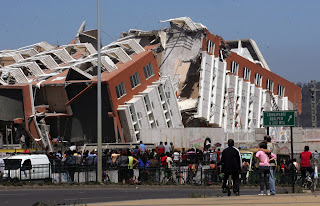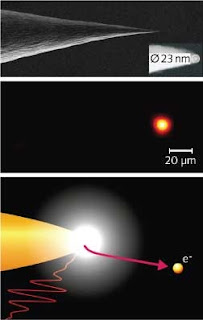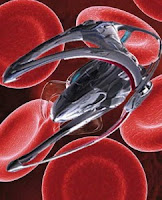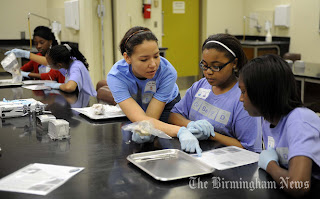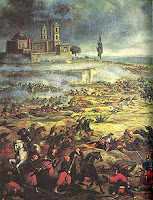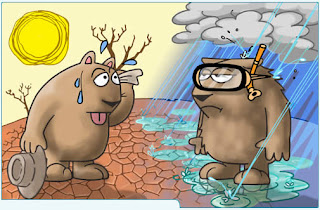SEM shows a gold nanotip (top) and localized photocurrent from the nanotip apex (middle). A schematic depicts the photoelectron escape trajectory (with quenched quiver motion) from the nanolocalized field (bottom). (Courtesy of University of Göttingen)
In 1905, Albert Einstein used his “quantum” view of light to explain key attributes of the photoelectric effect: The energy of electrons emitted from a metal does not increase at higher light intensities, as the classical wave theory contends, but only the number of emitted electrons increases, consistent with light quanta. With the photon energy E = hν, each electron acquires energy from one photon, and only by increasing the light frequency ν (and not intensity) can the energy of the emitted electrons be increased.
Now, more than a century later, scientists at the University of Göttingen (Göttingen, Germany) have demonstrated that in the so-called strong-field regime—the interaction of extremely high-intensity laser light with atoms and surfaces—classical dynamics may indeed prevail in photoemission from metal nanostructures.1
“In the usual photoeffect, one electron absorbs one photon, but in our experiments, we found electrons that had hitched a classical ride on the light field itself to escape confinement on the nanoscale,” says University of Göttingen scientist George Herink. “Strong, few-cycle infrared light pulses focused on gold nanotips cause the energy of electrons to grow with increasing intensity and wavelength; some electrons acquire the energy of not just one photon, but more than a thousand photons.”
Laser Focus World:
STRONG-FIELD PHYSICS: Ultrafast pulses, gold nanotips renew classical view of the photoelectric effect
